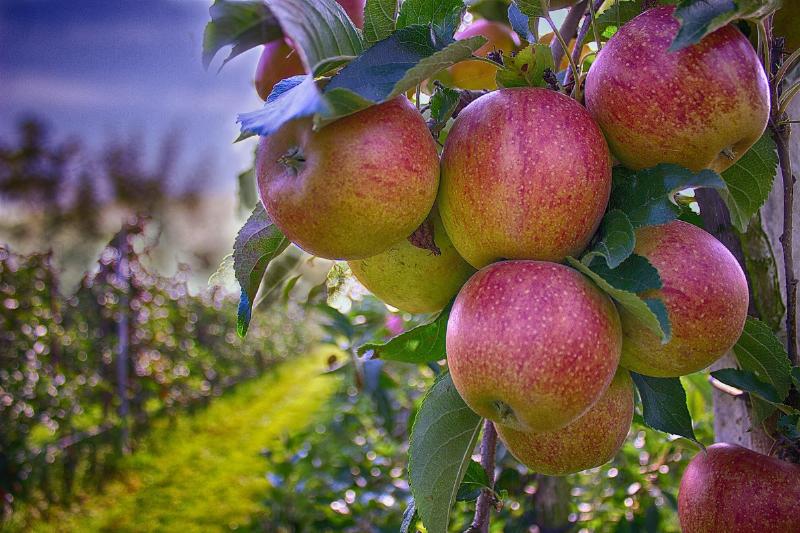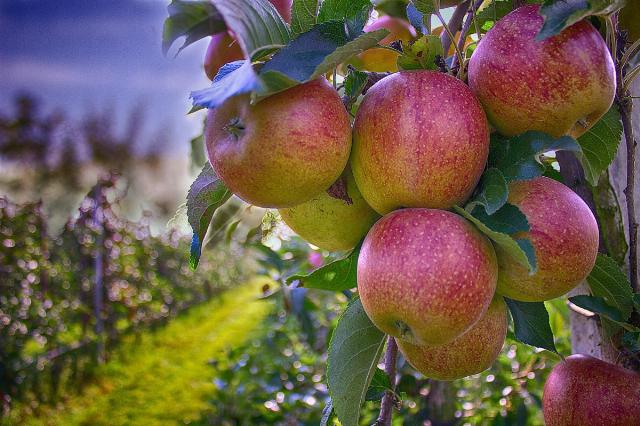


Among the climatically correct, nothing is more scandalous than describing carbon dioxide (CO2) emissions as beneficial. You can be blacklisted from public forums, professional networking sites, and even be removed from your tenured university position as an accomplished scientist.
Nonetheless, the truth is this: CO2 is fundamental to the photosynthetic process by which plants make food for themselves -- and ultimately for us. Furthermore, the increase in atmospheric CO2 from industrial activity in the past century has helped vegetation over most of the planet to flourish. Also benefiting plants has been the relative warmth of recent decades.
Among the beneficiaries are fruit plants, whose sensitivity to cold is well established. In April 2007, an unseasonable freeze caused considerable low-temperature injury to small fruit plants, including grapes, strawberries, blueberries, and blackberries, in 21 U.S. states. The financial repercussions for the agricultural sector were substantial. In North Carolina alone, farming losses were estimated to be $112 million, including $86 million in damages to fruit crops.
During the Little Ice Age (1300-1850), many of the fruit crops faced significant challenges from low temperatures, shorter growing seasons, and extreme weather events like frosts, heavy rains, and drought.
In Iceland and high alpine areas, agriculture nearly collapsed. In China’s Jiangxi Province, centuries-old orange cultivation was abandoned due to cold. In temperate zones, apple and pear trees struggled with erratic temperatures causing irregular blooming and lower yields.
Fast forward 175 years or so, and we have fruit crops thriving globally, thanks to elevated CO2 levels, relative warmth, and a series of innovations in plant biotechnology. Regardless of whether certain politicians or news media believe it or not, plants love the warmer temperatures and increasing carbon dioxide of our season of plenty.
Rising temperatures extend growing seasons by delaying fall frosts and advancing spring thaws, allowing more plantings and reducing late-spring frost risks for orchard growers. The U.S. growing season has lengthened by over two weeks since the early 20th century.
A 2022 study led scientists to conclude that there is no doubt about the “fertilization effect of CO2” on fruit species, which also benefit from natural warming as Earth recovers from the Little Ice Age.
“Growing crops under (elevated CO2) can increase photosynthesis and result in an increase in yield, flavor and nutritional content, including but not limited to Vitamins C, E” and compounds that can be converted to Vitamin A, concludes a 2023 study.
Some fruit plants benefit more than others. Tomatoes, for instance, show an astounding 80% increase in yield when CO2 in greenhouses is elevated to 1,000 parts per million (ppm), which is well above the ambient atmospheric level of 430 ppm.
The gourd family of crops like cucumber, melon, and squash all show increased yield or nutritional value with elevated CO2. Blueberries and raspberries likewise show a positive response to higher CO2. Strawberries exhibit increased yield and quality, including improved levels of dry matter-content, fructose, glucose, and total sugar. In Colombia, fruit trees, such as citrus, grapevines, papaya, and pitaya, benefited from elevated CO2’s effect of alleviating the stress of both drought and waterlogging.
The magic of CO2 can even unlock new possibilities in space exploration. A scientific study, which was aimed at understanding the suitability of leafy green crops for space cultivation, found that elevated CO2 (1,500–3,000 ppm) increased growth and yield in certain types of lettuce, bok choy, kale, and mustard, with many showing higher levels of Vitamins C and B1.
Plant biologists believe that fruit yields can be further increased with adjustments to other factors like nitrogen content, genotypic choices, and application of agricultural technologies.
In the meantime, it probably makes sense to work on making fruit crops more resilient to low temperatures by developing cold-hardy fruit genotypic varieties, as eventual global cooling is a greater risk to food supplies than the warmth of today’s climate.
In any case, there is no doubt that, from a horticultural perspective, currently rising levels of CO2 have proven, well, fruitful.
Vijay Jayaraj is a Science and Research Associate at the CO2 Coalition, Fairfax, Virginia. He holds an M.S. in environmental sciences from the University of East Anglia and a postgraduate degree in energy management from Robert Gordon University, both in the U.K., and a bachelor’s in engineering from Anna University, India.

Image: PxHere
